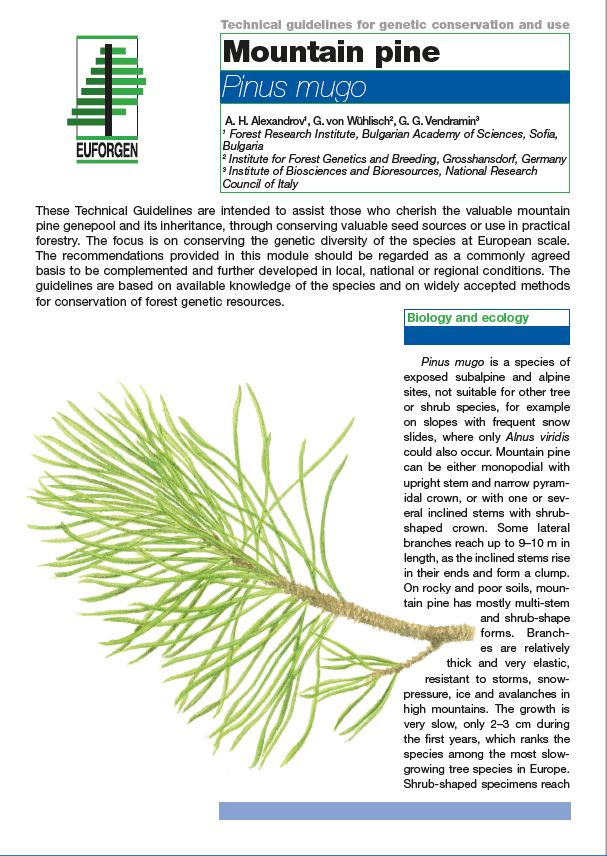Pinus mugo - Technical guidelines for genetic conservation and use of mountain pine
Large autochthonous mountain pine populations are characterized by high genetic diversity and adaptability which suggest in situ conservation as the main strategy. In situ conservation of mountain pine contributes to the natural recovery of the treeline, which is lowered in many places due to anthropogenic impact (fires, felling, grazing, building activities).
National parks often harbour large mountain pine formations and provide in situ genetic conservation of this species. However, it still needs protection due to extension of natural and man-made disturbances. Therefore it is recommended that genetic conservation programmes start with the following objectives: conservation of endangered, marginal populations and habitats of Pinus mugo; sampling the genetic diversity; establishment of genetic conservation units based on long term autochthony, high biodiversity value and location in ecologically diverse regions of large populations (> 1000 individuals).
Whenever natural regeneration is unsatisfactory, like for restoration of burnt and eroded terrains in mountain pine zones, sowing and/or planting need to be carried out. When artificial regeneration is carried out according to the principles of genetic conservation, then the following requirements for the use of reproductive material must be observed:
- Preference should always be given to local material, unless results from provenance trials point to inferior quality or growth characteristics in the local population. Local material usually guarantees retention of the evo- lutionary and adaptive characteristics that have developed at a given site under specific condi- tions over generations. Lack of adaptability can lead to serious failures at any stage of the long lifespan of mountain pine and other forest tree species.
- If there is no local material available or if there are signs of inbreeding, then restoration may rely on the introduction of material from outside. Material from localities sharing the site conditions with the regeneration site should be preferred.
Authors: Alexander H. Alexandrov; Georg von Wühlisch; Giovanni Giuseppe Vendramin
Journal/Series:
EUFORGEN Technical Guidelines for Genetic Conservation and Use
Publication Year: 2019
Publication Format: PDF
ISBN: 978-952-5980-64-6
Language: EN
Pages: 6 p.
Technical guidelines Pinus mugo

